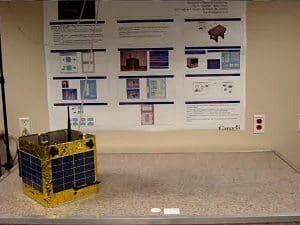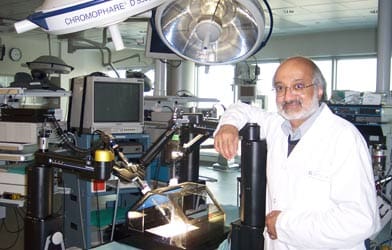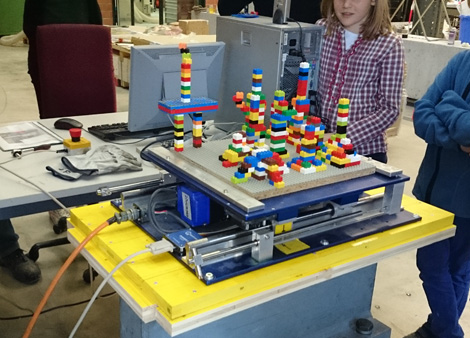
The Canadian Space Agency (CSA) is a world leader in the research, design and development of space robotics and cutting-edge spacecraft technologies, such as advanced satellite systems. While working on research and development for its groundbreaking nano-satellite project, CSA’s spacecraft technologies group required sophisticated real-time control tools. CSA was looking for a partner company that would be responsive and supportive, understand its complex application issues, and possess the ability to develop an adaptable, flexible platform.
In a multi-phase effort to develop a collaborative control strategy for a mock-up of an array of nano-satellites, the group required deterministic real-time performance in their control loops. CSA had already made a significant investment of time and money in examining several platforms, but the available tools and systems were incapable of meeting the highly sophisticated needs of this project. With its expertise in advanced robotics, mechatronics and real-time control systems, Quanser was the ideal partner to develop a customized real-time solution to take this project to the next level.
Challenge
Deterministic, yet simple nano-satellite model
Ultimately, CSA required a deterministic yet simple, easy-to-use, single-PC solution to develop a control system for the first mock-up nano-satellite platform, known as the Free Flyer.
With its WinCon* real-time control software, Quanser offered the rare combination of a flexible, easy-to-use platform and unrivalled real-time performance results. Quanser’s WinCon software and Q8 IO board were seen as the ideal platform solution, however, the client required additional capabilities. Quanser’s challenge was to adapt its cutting-edge, real-time control tools to meet the particular needs of this project.
Solution
Quanser om-house expertise and real-time controls tools
Quanser’s in-house technical expertise in developing sophisticated real-time control solutions, and its WinCon software, were the keys to success in this case.
Quanser collaborated closely with CSA to understand the application development issues and was quickly able to determine the real-time control requirements for this project. In fact, client collaboration was an important part of the entire process as Quanser worked to adapt its tools to meet CSA’s needs. “Quanser is excellent – they listened to our specific needs and responded with a creative solution,” says Alfred Ng, CSA’s Manger of Control Systems.
Quanser was able to adapt its WinCon software quickly and reliably. The team developed a real-time communications toolbox to allow for real-time communication between the host computer and embedded computers. In addition, Quanser designed modules for special purpose sensors to support the system: an inertial navigation system (INS) sensor, known as Crossbow, and a remote-controlled positioning device.
Finally, Quanser offered a unique development partnership with CSA – a beta site for Quanser’s WinCon product line and the ability for CSA to influence its development.
Result
Effective solutions, collaboration on more projects
Quanser’s WinCon software was successfully implemented into CSA’s satellite test bed – the Free Flyer. The air-bearing Free Flyer is remotely controlled via radio link from a laboratory PC using WinCon for real-time operation.
By adapting its already-flexible platform for this highly sophisticated project, Quanser was able to quickly deliver an effective real-time control solution, and CSA is able to further its research into the next phase of nano-satellite collaborative control development.
Quanser provided the final proof-of-concept quickly, and, according to the client, the modules were an immediate success. “The deliverable solved our problem immediately, and Quanser continues to monitor our needs to determine how they can help accelerate our progress,” says Ng. “I have recommended Quanser to my colleagues and will continue to do so.”
Based on the success of this partnership, Quanser continues to work in collaboration with CSA to determine how it can assist with the company’s next-generation space robotics projects and other initiatives.



